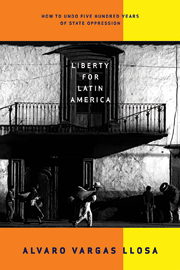WASHINGTON—Anticipation in advance of the coming Group of 20 meeting in London centers on doing something about the excesses in the financial markets that led to the recent housing bubble. Since those excesses were largely triggered by government actions, the G-20 would do well to focus on limiting the authorities’ capacity to engender future bubbles.
The housing bubble was a creature of the Federal Reserve’s fabrication of money and credit when neither was warranted by economic activity. In 2001, reeling from the bursting of the technology bubble at the end of the 1990s and then the terrorist attacks of 9/11, the Fed lowered the interest rate target from 6.5 percent to 1.75 percent; by June 2003, the rate was down to 1 percent. In that crucial period, the Fed had to increase the money supply at an annual rate of between 5 percent and 10 percent in order to get the interest rates down to the desired level. In the process, mortgage rates also came down.
This monetary alchemy was no different, in essence, from the one that led to the Crash of 1929: During the 1920s, the money supply grew more than 60 percent in total. It also echoed the Sherman Silver Purchase Act of 1890, when the government injected dollars into the economy through the purchase of silver. That brought on the depression of 1893.
Former Fed Chairman Alan Greenspan argues that foreign savings were the real culprit of the housing bubble because the Chinese pumped too much money into the U.S. by purchasing Treasury bonds. But it is the Fed that sets the interest rate target. By Greenspan’s own logic, the Fed could have kept a higher target and taken out of the system the excess money originated in Chinese investments in the U.S.
Other factors were the government incentives and mandates that pushed banks to make loans to people who could not afford them. The incentives took the form of Fannie Mae and Freddie Mac, government creations that bought mortgages from banks and resold them with guarantees. The legal mandates included the Community Reinvestment Act, reinforced by Congress in 1999. And how ironic that the pooling and repackaging of mortgages in order to attract investors—the much-decried securitization behind the housing bubble—was originally an act of the Department of Housing and Urban Development, which created the mortgage-backed security in 1970.
The G-20 should also bear in mind how much regulation already exists and how ineffective it has been. A few months ago, in an article in Canada’s National Post, Pierre Lemieux, an economist with the University of Quebec, enumerated the norms and bodies that regulate the U.S. financial system. The list includes the enormous powers given to the Federal Deposit Insurance Corporation in 1991 and 2002; the Sarbanes-Oxley Act that expanded the authority of the Securities and Exchange Commission; the obligation of financial firms to value their assets according to current prices, however undervalued they may temporarily be; the 31 pieces of regulation administered by the Fed; and a big expansion of the budgets of all the regulatory bodies in the last five years.
Every previous crisis has generated new regulations—and the market, through innovation, has found ways to stay ahead. When does this stop? When the government nationalizes the entire financial system? No, not even then, since the response would no doubt be a huge black market.
Washington also contributed to the crisis with its record of rescuing irresponsible banks. No regulatory deterrent is more powerful than the fear of failure, but that has been effectively removed from large parts of the financial system. Consider the ludicrous situation the American International Group, the financial giant bailed out by the government, finds itself in. A near-scandal broke out when politicians learned the names of the important American and foreign banks AIG had paid, after receiving taxpayer bailout funds. But wasn’t the rescue of AIG based on the premise that if it went down it would drag all sorts of important institutions to whom it owed money?
A few days ago, professor Kevin Dowd of Nottingham University gave a lecture in London on the financial crisis. He offered the classical economist’s definition of waste: a bus full of Keynesian economists goes over a cliff and there are still some empty seats. Lest the G-20 is tempted to “go Keynesian,” it should keep the joke in mind.












